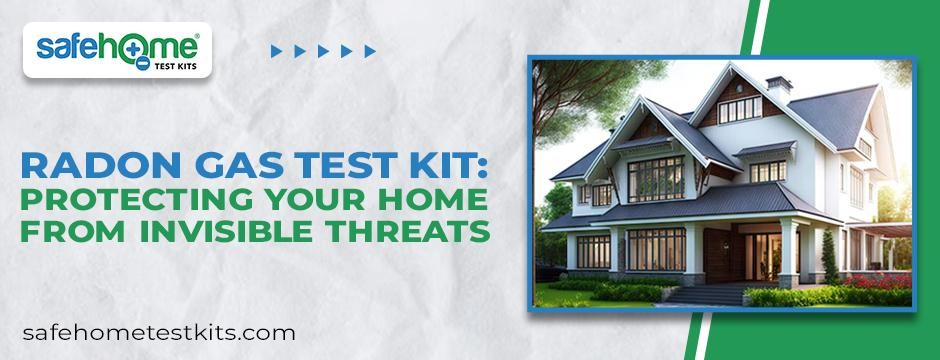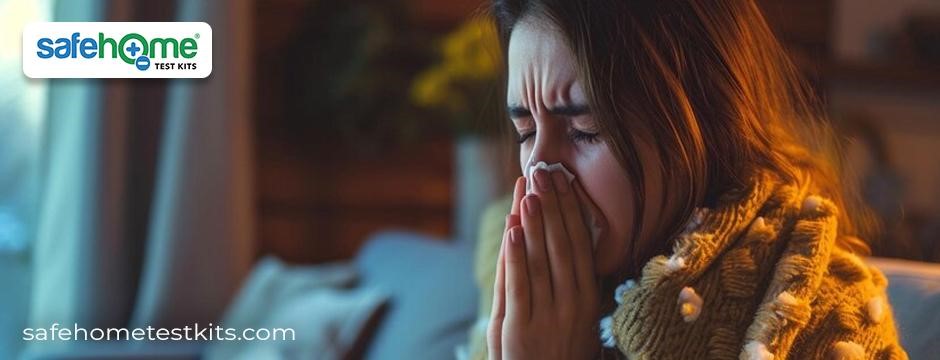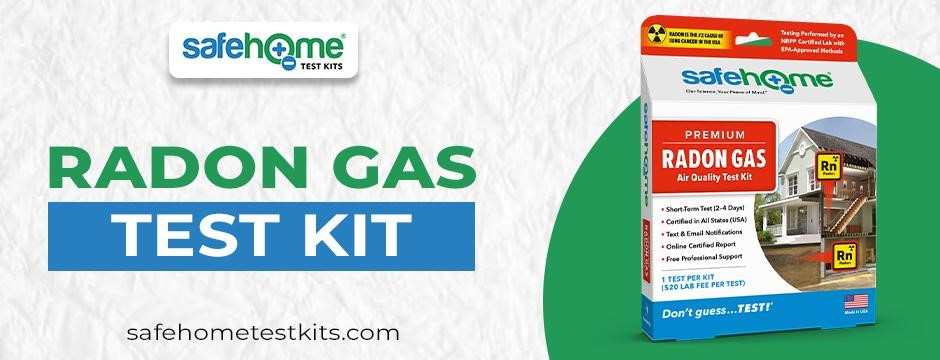Radon Gas Test Kit: Protecting Your Home from Invisible Threats

Radon gas, a radioactive by-product of uranium decay found in bedrock, is a silent intruder that can pose significant risks to your health and well-being. This invisible threat can infiltrate your home through various entry points, including foundation cracks, drains, pipes, sumps, and well water. Once inside, it spreads through your living space via the HVAC system, creating a hazardous environment without your knowledge.
The Hidden Danger
The alarming truth is that radon is the leading cause of lung cancer among non-smokers in the United States. Shockingly, it claims the lives of over 20,000 individuals every year. What makes radon particularly dangerous is its odorless and tasteless nature, making it virtually undetectable without proper testing measures.
- Leading Cause of Lung Cancer: Radon gas is the primary contributor to lung cancer cases among non-smokers in the United States, emphasizing its significant role in public health concerns.
- High Fatality Rate: Annually, radon exposure results in the loss of over 20,000 lives, highlighting the urgent need for awareness and preventive measures to combat its detrimental effects.
- Odorless and Tasteless: One of the most alarming aspects of radon is its lack of odor or taste, making it virtually impossible for individuals to detect its presence without specialized testing equipment.
- Stealthy Nature: Radon operates covertly, infiltrating homes through cracks in foundations, pipes, and other entry points without leaving any visible signs of its presence.
- Long-Term Exposure Risks: Prolonged exposure to elevated radon levels increases the risk of developing lung cancer and other respiratory ailments, posing a significant threat to individuals’ health and well-being.
- Vulnerable Population: Children, older people, and individuals with pre-existing respiratory conditions are particularly susceptible to the adverse effects of radon exposure, further underscoring the importance of mitigation efforts.
- Difficulty in Diagnosis: Symptoms of radon exposure often mimic those of common respiratory illnesses, making it challenging to diagnose without specific testing for radon levels in the home.
- Lack of Public Awareness: Despite its widespread prevalence and profound health implications, many individuals need to be made aware of the dangers of radon gas, leading to insufficient preventive measures.
- Costly Health Consequences: The economic burden of radon-induced health issues extends beyond medical expenses, encompassing lost productivity, reduced quality of life, and emotional distress for affected individuals and their families.
Implementing radon testing and mitigation measures in residential and commercial properties is crucial for reducing exposure risks and safeguarding public health against the hidden danger of radon gas.
Detecting Radon Gas
Radon gas is an invisible threat that can sneak into dwellings unnoticed, posing severe health hazards to those inside. Since it’s odorless and invisible, detecting radon requires vigilance. Here are some things to look for:
- High Radon Levels in Your Area: Certain geographic regions have higher radon concentrations due to underlying soil and rock compositions—research radon levels in your area to understand the potential risk.
- Home Testing Kits: Utilize the Radon Testing Kit, which is readily available in hardware stores or online. These kits provide accurate measurements of radon levels in your home, helping you identify if mitigation is necessary.
- Symptoms of Radon Exposure: While radon is undetectable, prolonged exposure can lead to health issues such as persistent coughing, chest pain, wheezing, and respiratory infections. If you or your family experience these symptoms, consider testing for radon.
- Visible Cracks or Gaps: Radon can enter homes through cracks in foundations, walls, floors, or gaps around pipes. Regularly inspect these areas for any deterioration or openings where radon could infiltrate.
- Unexplained Health Issues: If multiple occupants in your home experience unexplained health issues, especially respiratory-related problems, it could indicate radon exposure. Consult with a healthcare professional and consider radon testing as a precautionary measure.
- Increased Radon Levels in Nearby Homes: If neighboring homes have tested positive for elevated radon levels, your home may also be affected. Collaborate with neighbors to monitor radon levels collectively.
- Poor Indoor Air Quality: Radon gas can contribute to poor indoor air quality, exacerbating respiratory issues and allergies. Noticeable changes in indoor air quality, such as stale or musty odors, could indicate radon presence.
- Occupancy Patterns: Radon levels can vary depending on factors like ventilation and occupancy. Pay attention to whether radon levels fluctuate throughout the day or in specific areas of your home, indicating potential entry points or ventilation issues.

Symptoms of Radon Exposure
Prolonged exposure to radon gas, a silent and odorless threat, can have severe health consequences. Understanding the symptoms of radon exposure is crucial for early detection and prevention. While radon itself is invisible, its effects on health manifest in various ways:
- Persistent Coughing: Chronic exposure to radon may lead to persistent coughing, which can be dry or produce mucus. This coughing may worsen over time and become more frequent.
- Difficulty Breathing: Radon exposure can cause difficulty breathing, often accompanied by a sensation of tightness in the chest. Individuals may experience shortness of breath, especially during physical exertion or in poorly ventilated spaces.
- Chest Pain: Some individuals exposed to elevated radon levels may experience chest pain or discomfort. This pain can vary in intensity and may be mistaken for other cardiac or respiratory conditions.
- Respiratory Infections: Radon exposure weakens the respiratory system, making individuals more susceptible to respiratory infections such as bronchitis and pneumonia. These infections may recur frequently and be more challenging to treat effectively.
- Wheezing: Wheezing, characterized by a high-pitched or whistle-like sound when breathing, can occur due to radon-induced inflammation and constriction of the airways. It may accompany other respiratory symptoms.
- Fatigue: Radon exposure can cause fatigue and lethargy, even with sufficient rest. Individuals may feel persistently tired and lacking energy or motivation, which can impact daily activities and quality of life.
- Unexplained Weight Loss: Radon exposure may lead to unexplained weight loss despite maintaining regular eating habits. This weight loss may occur gradually over time and without apparent cause.

When to Invest in a Radon Gas Test Kit
Investing in a Radon Gas Test Kit is a proactive step toward ensuring the safety of your home environment. Here’s when it’s essential to consider testing for radon:
- Buying a New Home: Before finalizing the purchase of a new home, especially in areas with known radon risks, conducting a radon test is crucial. It provides peace of mind and allows negotiation with sellers if elevated radon levels are detected.
- Living in High-Risk Areas: If you reside in an area with a history of high radon levels, testing for radon should be a priority. Geographic regions with specific soil compositions are more prone to radon infiltration, putting residents at higher risk of exposure.
- Long-Term Occupancy: Conducting a radon test for homes that haven’t been tested for radon in recent years or have undergone significant renovations is advisable. Changes in ventilation or structural integrity can impact radon levels, necessitating reevaluation.
- Family Health Concerns: If family members experience unexplained respiratory issues or other symptoms associated with radon exposure, testing for radon levels in the home is essential. Early detection can prevent further health complications.
- Routine Maintenance: Incorporating radon testing into routine home maintenance practices ensures ongoing indoor air quality monitoring. Regular testing helps detect fluctuations in radon levels and allows for timely mitigation measures if needed.
Take Control of Your Home's Air Quality
Don’t let invisible threats compromise your home’s health and safety. With the Safe Home® Radon Gas Test Kit, you can take control of your indoor air quality and protect your family from the dangers of radon exposure. By conducting regular testing and investing in effective mitigation measures, you can enjoy peace of mind knowing that your home is a safe and healthy environment for everyone.
Conclusion
Radon gas poses a significant health risk to homeowners across the United States. With its invisible and odorless nature, detecting radon requires proactive testing measures. Investing in a reliable Radon Gas Test Kit from Safe Home® is crucial in safeguarding your home and protecting your loved ones from the harmful effects of radon exposure. Don’t wait until it’s too late—take control of your home’s air quality today.
Purchase the Radon Gas Test Kit from Safe Home® here: https://safehometestkits.com/product/safe-home-radon-gas-test-kit-premium/
For any questions, please get in touch with us by calling 888-932-6699 or by email at info@safehometestkits.com.


